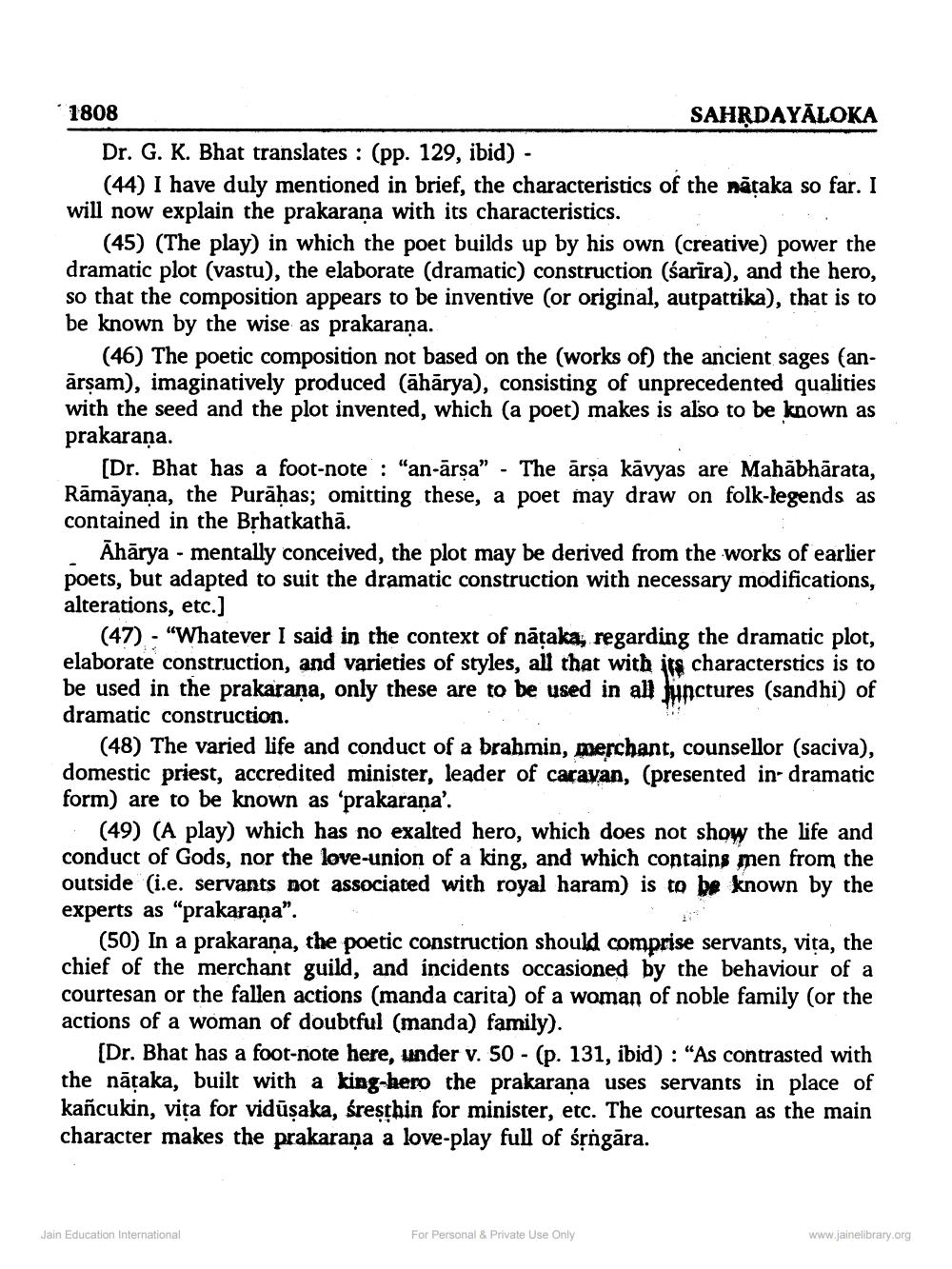________________
1808
SAHRDAYĀLOKA Dr. G. K. Bhat translates : (pp. 129, ibid) -
(44) I have duly mentioned in brief, the characteristics of the nataka so far. I will now explain the prakarana with its characteristics.
(45) (The play) in which the poet builds up by his own (creative) power the dramatic plot (vastu), the elaborate (dramatic) construction (śarīra), and the hero, so that the composition appears to be inventive (or original, autpattika), that is to be known by the wise as prakarana.
(46) The poetic composition not based on the (works of) the ancient sages (anārsam), imaginatively produced (āhārya), consisting of unprecedented qualities with the seed and the plot invented, which (a poet) makes is also to be known as prakaraṇa.
(Dr. Bhat has a foot-note : "an-ārsa" - The ārsa kāvyas are Mahābhārata, Rāmāyana, the Purāhas; omitting these, a poet may draw on folk-legends as contained in the Brhatkathā.
Ahārya - mentally conceived, the plot may be derived from the works of earlier poets, but adapted to suit the dramatic construction with necessary modifications, alterations, etc.)
(47), "Whatever I said in the context of nāšaka, regarding the dramatic plot, elaborate construction, and varieties of styles, all that with its characterstics is to be used in the prakarana, only these are to be used in all junctures (sandhi) of dramatic construction.
(48) The varied life and conduct of a brahmin, merchant, counsellor (saciva), domestic priest, accredited minister, leader of caravan, (presented in- dramatic form) are to be known as 'prakaraña'.
(49) (A play) which has no exalted hero, which does not show the life and conduct of Gods, nor the love-union of a king, and which contains men from the outside (i.e. servants not associated with royal haram) is to be known by the experts as "prakarana".
(50) In a prakarana, the poetic construction should comprise servants, vita, the chief of the merchant guild, and incidents occasioned by the behaviour of a courtesan or the fallen actions (manda carita) of a woman of noble family (or the actions of a woman of doubtful (manda) family).
(Dr. Bhat has a foot-note here, under v. 50 - (p. 131, ibid) : "As contrasted with the nātaka, built with a king-hero the prakarana uses servants in place of kañcukin, vita for vidūsaka, sresthin for minister, etc. The courtesan as the main character makes the prakarana a love-play full of śrngāra.
Jain Education International
For Personal & Private Use Only
www.jainelibrary.org




